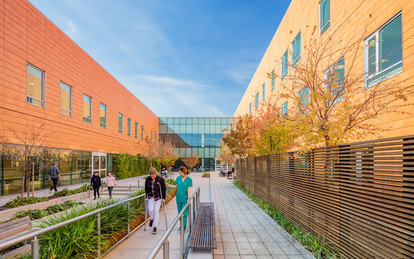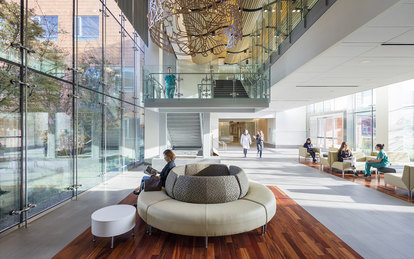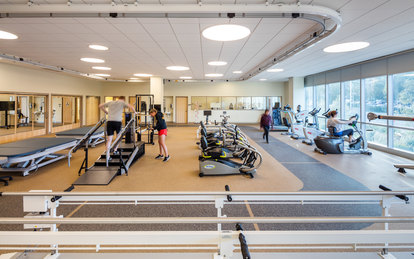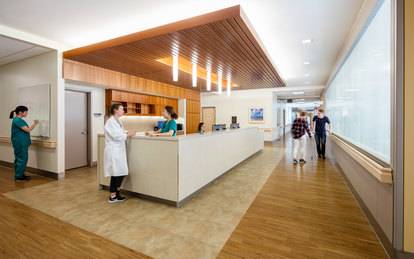VAPA 多创伤和盲人康复中心
With advances in battlefield medicine and armor, many more of our seriously wounded soldiers are now surviving, but are returning with multiple traumatic injuries, or polytraumas, requiring long-term rehabilitation. A growing population of veterans of previous wars also have age-related disabilities and impairments, often as a result of old injuries.
The new U.S. Department of Veterans Affairs Palo Alto (VAPA) Polytrauma and Blind Rehabilitation Center is one of only five polytrauma centers in the country designed to serve this special patient cohort. At 174,000 square feet, it is the largest in the VA system and the only VA rehabilitation center in the country to accommodate polytrauma and blind rehabilitation under one roof. This new interdisciplinary approach to patient care gives veterans access to a wide range of services, from physical and occupational therapy, to living skills training for the vision-impaired.
客户
U.S. Department of Veterans Affairs
位置
Palo Alto, California
市场/服务
Architecture, Campus Planning, Design Thinking, Energy & Environmental Modeling, Health, Interiors, LEED, Lighting Design, Programming, Strategic & Master Plans, Sustainable Design
大小
174,000 SF
特色奖项
American Institute of Architects - Academy of Architecture for Health (AHA), 2019
Fast Company Innovation by Design Awards, Spaces, Places and Cities, Honorable Mention, 2018
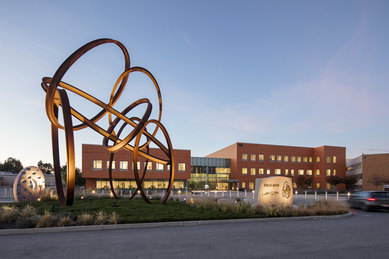
The Center houses 24 polytrauma rehabilitation beds, 32 blind rehabilitation beds, and 12 polytrauma transitional rehabilitation beds.
This is the largest rehab facility within the federal government. Spanning over 170,000 sf, it has be specially designed with every detail considered to integrate state of the art rehab and medical technology with meaningful architectural aesthetics.
Jeff Teraoka, MD
Chief, Physical Medicine and Rehabilitation
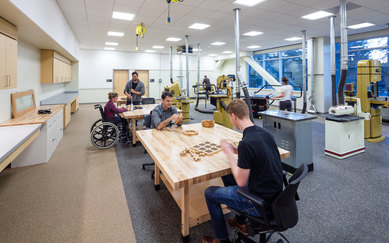
Wayfinding is a critical issue in healthcare, and even more so for visually and physically impaired patients. Designers studied what it means to navigate the building when one or more senses are impaired. Pavement and flooring tile color and texture provide navigation, and textured surfaces reinforce landmarks. A carefully designed transition from artificial to natural lighting help patients with photo-sensitivity. Patient rooms have an abundance of natural light and non-institutional materials, and feature an unobtrusive lift to give patients more mobility and safety.
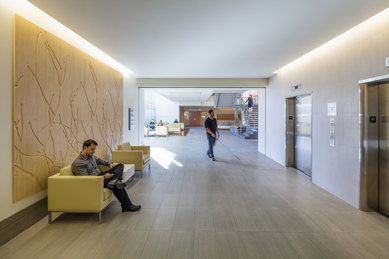
At various landmarks, such as the elevator lobbies, a tree-like pattern is beveled into a wood panel, providing an artistic yet tactile experience that doubles as a wayfinding cue.
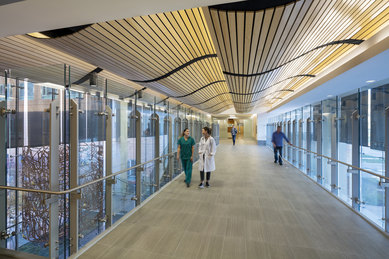
Acoustically directional forms, such as vaulted ceilings, also help with orientation and navigation.
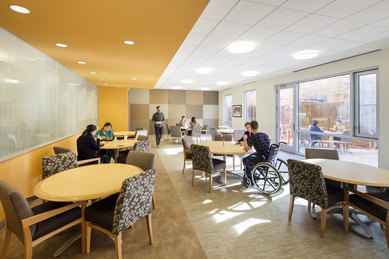
Social support is a vital part of rehabilitation, especially for veterans who have an inherent spirit of comradery. There is a celebration room, a community-centered space used for graduation ceremonies and gatherings. Play courts, including basketball, bocce ball, horseshoes, and a golf putting green and driving net, encourage recreation as therapy. More private areas promote quiet reflection or small gatherings.
The Polytrauma and Blind Rehabilitation Center embraces a modern healthcare concept with a space that truly respects its visitors. It is a model for reinforcing equity by design in the built environment that provides comforting opportunities for patients to heal during their rehabilitation journey.
